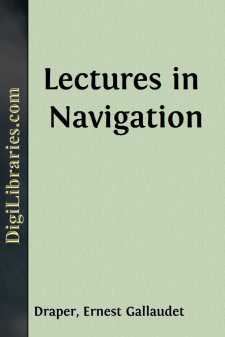Categories
- Antiques & Collectibles 13
- Architecture 36
- Art 48
- Bibles 22
- Biography & Autobiography 816
- Body, Mind & Spirit 145
- Business & Economics 28
- Children's Books 17
- Children's Fiction 14
- Computers 4
- Cooking 94
- Crafts & Hobbies 4
- Drama 346
- Education 58
- Family & Relationships 59
- Fiction 11834
- Foreign Language Study 3
- Games 19
- Gardening 17
- Health & Fitness 34
- History 1378
- House & Home 1
- Humor 147
- Juvenile Fiction 1873
- Juvenile Nonfiction 202
- Language Arts & Disciplines 89
- Law 16
- Literary Collections 686
- Literary Criticism 179
- Mathematics 13
- Medical 41
- Music 40
- Nature 179
- Non-Classifiable 1768
- Performing Arts 7
- Periodicals 1453
- Philosophy 66
- Photography 2
- Poetry 897
- Political Science 203
- Psychology 45
- Reference 154
- Religion 516
- Science 126
- Self-Help 85
- Social Science 82
- Sports & Recreation 34
- Study Aids 3
- Technology & Engineering 59
- Transportation 23
- Travel 463
- True Crime 29
Our website is made possible by displaying online advertisements to our visitors.
Please consider supporting us by disabling your ad blocker.
Lectures in Navigation
Categories:
Description:
Excerpt
TUESDAY LECTURE
The Compass
Everyone is supposed to know what a compass looks like. It is marked in two ways—the old way and the new way. Put in your Note-Book this diagram:
The new way marked on the outside of the diagram, starts at North with 0°, increases toward the right through East at 90°, South at 180°, West at 270° and back to North again at 360° or 0°.
The old way, marked on the inside of the diagram, starts at North with 0°, goes to the right to 90° at East and to the left to 90° at West. It also starts at South with 0°, goes to the right to East at 90° and to the left to West at 90°.
A Compass Course can be named in degrees, according to either the new or old way. For instance, the new way is just 45°. The old way for the same course is N 45° E. New way - 100°. Old way for same course - S 80° E.
There is another way to name a compass course. It is by using the name of the point toward which the ship is heading. On every ship the compass is placed with the lubber line (a vertical black line on the compass bowl) vertical and in the keel line of the ship. The lubber line, therefore, will always represent the bow of the ship, and the point on the compass card nearest the lubber line will be the point toward which the ship is heading.
The compass card of 360° is divided into 32 points. Each point, therefore, represents 11¼°. The four principal points are called cardinal points. They are - North, East, South, West. Each cardinal point is 90° from the one immediately adjacent to it. It is also 8 points from the one adjacent to it, as 90° is 8 points, i.e., 11¼° (one point) times 8. Midway between the cardinal points are the inter-cardinal points. They are - N E, S E, S W, N W, and are 45° or 4 points from the nearest cardinal point. Midway between each cardinal and inter-cardinal point - at an angular distance of 22½° or 2 points, is a point named by combining a cardinal point with an inter-cardinal point. For instance, NNE, ENE, ESE, SSE, SSW, WSW, WNW, NNW. Midway between the last points named and a cardinal or inter-cardinal point, at an angular distance of 11¼°, is a point which bears the name of that cardinal or inter-cardinal point joined by the word by to that of the cardinal point nearest to it. As, for instance, N by E, E by N, E by S, S by E, S by W, W by S, W by N, N by W. Also NE x N, NE x E, SE x E, SE x S, SW x S, SW x W, NW x W, NW x N. The angular distance between each and every whole point is divided into 4 parts called half and quarter points and each representing an angular measure of approximately 2° 49'. In mentioning fractional points, the U. S. Navy regulations are to name each point from North and South toward East and West except that divisions adjacent to a cardinal or inter-cardinal point are always referred to that point: For instance, N ½ E, N x E ½ E, NE ½ N, NW ½ N, NW ¼ W, NW ¾ W, NW ¼ N.
Boxing the compass is naming each point and quarter-point in rotation, i.e., starting at North and going around to the right back to North again. Every man should be able to identify and name any point or quarter-point on the compass card.
In changing a point course into a degree course, for either new or old compass, a guide is herewith furnished you. This should be pasted into the front of your Bowditch Epitome. It shows, from left to right, the name of the point course, its angular measure in the new compass and its angular measure in the old compass. It also shows at the bottom, the angular measure of each division of one point. In understanding this guide, remember that each course is expressed in degrees or degrees and minutes.
Put in your Note-Book:
In Navigation, each degree is written thus °. Each fraction of a degree is expressed in minutes and written thus '. There are 60' in each degree. Each fraction of a minute is expressed in seconds and is written ". There are 60" in each minute. Four degrees, ten minutes and thirty seconds would be written thus: 4° 10' 30"....


